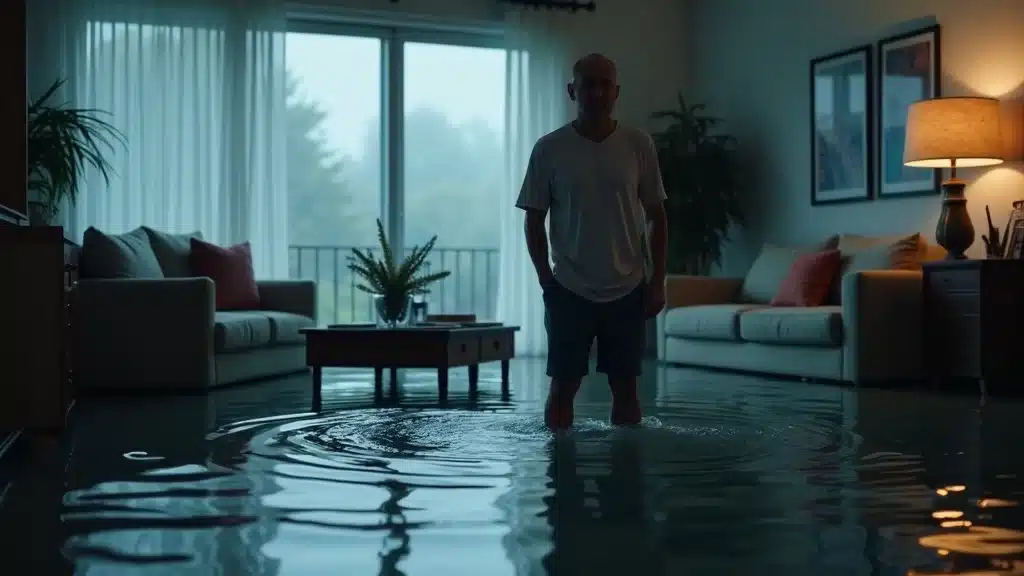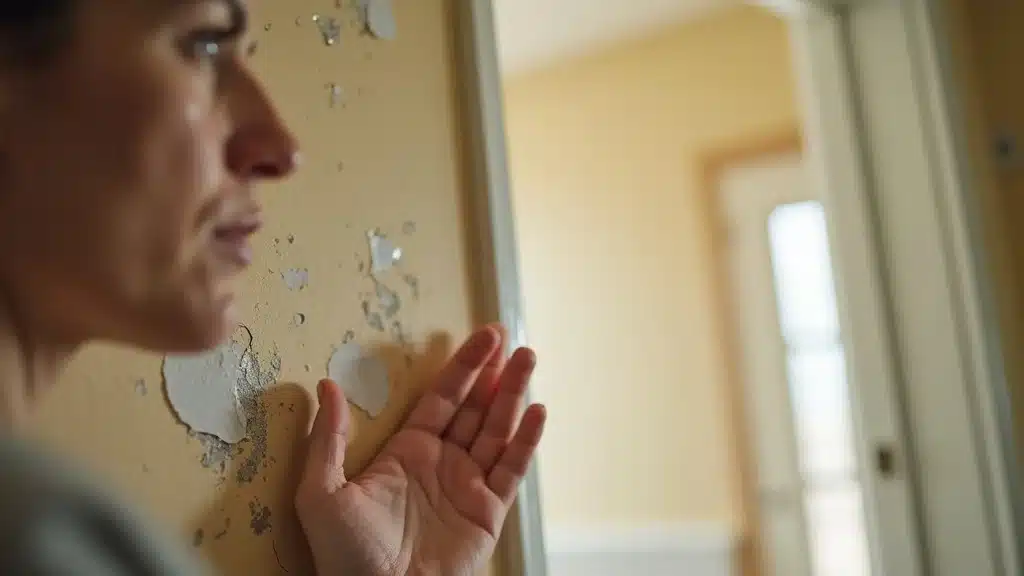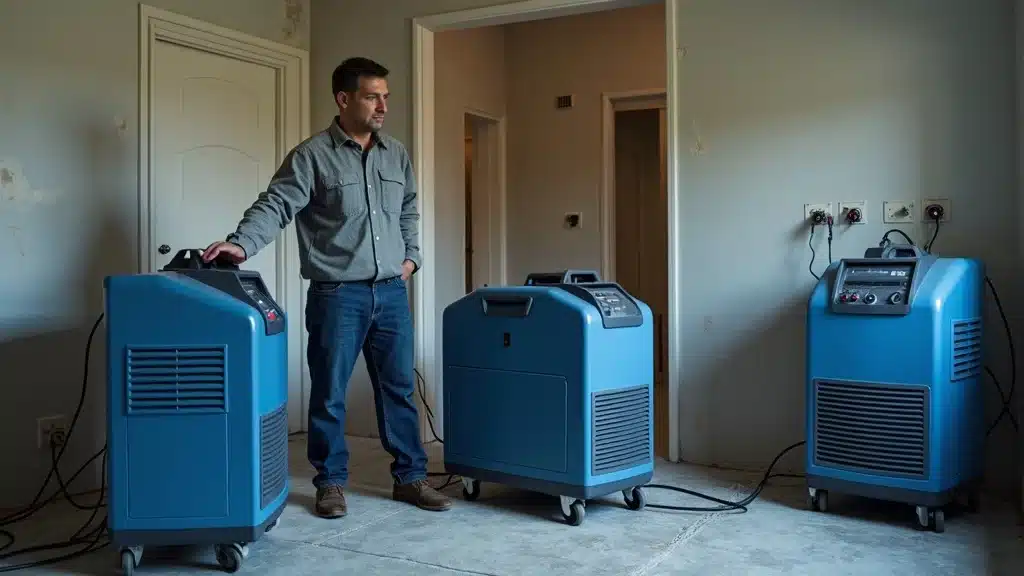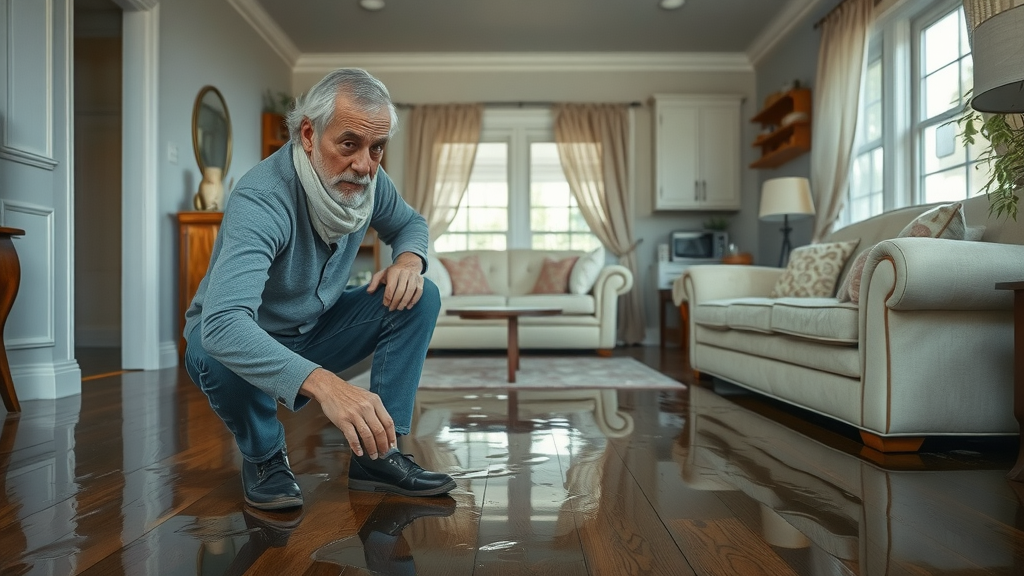Did you know that untreated water damage can cause mold to start growing within just 48 hours, jeopardizing your property’s structure and value? When disaster strikes, every second counts. Columbia, SC homeowners and businesses can’t afford to wait—swift action on emergency water removal is the only way to save your property, time, and money.
Every Second Counts: Why Emergency Water Removal in Columbia SC Is Critical
When water invades your home or business in Columbia, SC, the timing of your response makes all the difference. Emergency water removal is not just about cleaning up excess water; it’s about protecting your investment, health, and future peace of mind. Water left standing quickly seeps into walls, floors, and possessions, creating a perfect environment for mold growth and structural damage. Swift, professional water extraction and restoration services are your first line of defense against thousands of dollars in repairs and lost property value.
Delaying professional water removal, even by a few hours, can exponentially increase the level of damage to your property. Carpets, drywall, and wood become saturated, and before long, dangerous toxins and fungi can make your space unsafe. Don’t gamble with your family’s health or business’ viability—by choosing a certified team equipped with advanced extraction technology, you maximize your property’s recovery. If you’re searching for water damage restoration or damage restoration services in Columbia, SC, acting now is essential.
“Within 48 hours of water intrusion, untreated water damage can lead to dangerous mold growth and structural decay.”
The Impact of Delayed Emergency Water Removal on Property Value
Delay in emergency water removal services doesn’t just affect your immediate cleanup—it can have lasting repercussions on your property’s value. The longer you wait, the more likely you are to experience permanent water damage, structural issues, and significant decreases in resale value. Water seeps into the foundation, causing invisible—and very expensive—damage that can surface months or years later, serving as a red flag for future buyers and insurance adjusters alike.
Professional restoration services help restore property “back to normal” quickly, minimizing long-term costs and helping you avoid a compromised property report. By prioritizing immediate damage restoration, you’re also ensuring a healthier environment for your family or tenants, and preventing excess repair costs that can quickly mount to thousands of dollars. For Columbia, SC property owners, the urgency cannot be overstated: Act now to protect your biggest investment!
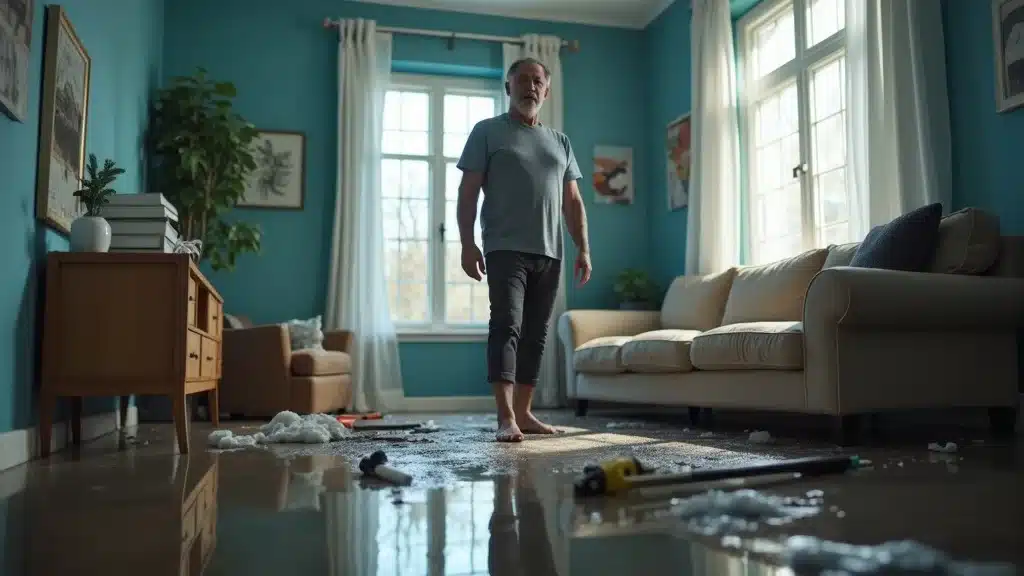
How Fast Emergency Water Removal Prevents Water Damage Escalation
Immediate action on water extraction is vital for containing the damage. Emergency water removal services use rapid-response strategies and specialized equipment to extract excess water, reduce humidity, and begin the drying process before mold spores have a chance to establish. The speed of response determines both the recovery cost and the scope of restoration needed. Fast water mitigation stops the domino effect: it protects drywall, ceilings, floors, wiring, and even sentimental items from being permanently lost to water damage.
Professional water damage restoration teams arrive rapidly, assess the affected area, and implement a custom plan using sump pumps, industrial vacuums, and dehumidifiers. This not only removes the water but also ensures proper moisture levels and prevents ongoing issues like warping, swelling, and mold growth. In Columbia, SC, where storms and plumbing issues can strike without warning, homeowners and businesses need water extraction solutions that are both immediate and reliable.
It’s also important to be aware of the common pitfalls that can occur during the emergency water removal process. For a deeper look at how to avoid costly mistakes and ensure your property is protected from further damage, explore this guide on emergency water removal best practices in Columbia SC.
What You’ll Learn About Emergency Water Removal in Columbia SC
- What defines emergency water removal and why it’s urgent
- The complete water extraction and restoration services process
- Professional emergency water removal techniques and technology
- How to choose the right water damage restoration experts in Columbia SC
- FAQs about emergency water removal and restoration services
Understanding Emergency Water Removal and Water Damage Restoration
Defining Emergency Water Removal and Water Damage Restoration
Emergency water removal is the rapid response service designed to extract excess water from a property—whether residential or commercial—immediately after water damage occurs. This urgent mitigation process is critical in minimizing further destruction to walls, floors, and valuable possessions. Restoration services go beyond water extraction to address any damage to your home, including structural drying, sanitation, and repairs that bring your home or business back to pre-damage conditions.
Key to this process is expertise: Certified restoration professionals in Columbia SC use advanced water extraction and damage restoration methods, employing specialized hardware and proven protocols to directly target the source of water and affected area. Whether you’re dealing with a burst pipe, appliance overflow, or flooding after a storm, these services are designed to handle the full extent of water mitigation and restoration from start to finish.
Common Water Damage Scenarios Requiring Immediate Action
Many water emergencies demand instant intervention. Burst pipes and plumbing failures can unleash hundreds of gallons of water into your property in minutes. Sewage backups not only cause widespread damage but also create serious health hazards. Columbia SC’s weather means flooded basements and storm-driven water intrusion are frequent dangers, and each scenario calls for immediate emergency water removal to prevent dangerous mold growth, electrical hazards, and structural compromise.
Restoration services must handle a wide range of emergencies:
- Burst pipes and plumbing failures
- Sewage backups
- Flooded basements
- Storm and hurricane damage that needs water extraction

The Water Extraction Process: Step-by-Step Guide
How Emergency Water Removal Services Handle Water Extraction
Emergency water removal services in Columbia SC utilize a meticulous, proven water extraction process that prioritizes speed, accuracy, and safety. The journey begins with a thorough inspection—using moisture meters to assess the affected area and determine the extent of water intrusion. Next, industrial-grade pumps and vacuums extract excess water from flooring, carpets, basements, and hard-to-reach areas. Once the water is removed, technicians leverage air movers and high-powered dehumidifiers to accelerate the drying process and monitor for hidden or trapped moisture.
Throughout every stage, certified water restoration professionals ensure that all steps align with IICRC standards for damage restoration, mitigating risks of mold and further decay. It’s not just about restoring your space “back to normal”—it’s about ensuring your property remains safe for occupants, and resilient against future emergencies. Proper drying process and sanitation procedures are implemented before any necessary repairs or remodeling work begins, safeguarding your home or business on every level.
Technologies Used for Fast Water Removal
The speed and success of emergency water removal depend greatly on the machinery and technology applied. Professional restoration services rely on a combination of industrial pumps (for rapid evacuation of standing water), high-volume air movers (to ensure surface water evaporates quickly), and advanced dehumidifiers (to extract water from the air). Moisture meters and infrared cameras help pinpoint hidden saturation in building materials, while antimicrobial cleansers are used to prevent mold growth and bacteria buildup.
This advanced approach allows water mitigation specialists to deliver fast, precise outcomes, sparing property owners from costly, ongoing repairs. The blend of scientific monitoring tools and hands-on expertise sets Columbia SC’s professional water removal teams apart from DIY attempts, quickly restoring homes and businesses to a clean, healthy, pre-damage condition.

- Industrial pumps for water removal
- Moisture meters for water damage assessment
- Dehumidifiers and advanced drying equipment for damage restoration
Emergency Water Removal Services for Flooded Basements and Beyond
Flooded Basement? When to Call Emergency Water Removal Experts
If you find a flooded basement in your Columbia property, time is truly of the essence. A sump pump failure, heavy rainfall, or plumbing leak can cause water to accumulate fast—threatening the structural integrity and creating a hazardous environment. The signs you need a professional immediately include standing water, soaked walls, warped wood, lingering musty odors, and any visible signs of electrical risk or mold spots. Emergency water removal experts are equipped to address even the toughest flooded basement challenges, using specialized water extraction processes to restore your space safely and efficiently.
Don’t risk your health or your home’s foundation—call for professional water removal at the first sign of trouble. Experts will assess the scope, begin the water extraction and drying process, and implement measures that prevent mold and structural damage. Columbia, SC residents and businesses count on 24/7 availability from certified restoration services to protect their most valuable asset during a water emergency.

Specialized Water Extraction for Residential and Commercial Properties
While flooded basements are a common emergency, water damage can strike any part of your home or business. Professional restoration services in Columbia SC tailor their approach to the unique needs of each property. For residential settings, the Priority is protecting personal belongings and restoring living conditions quickly to prevent disruption and costly secondary damage. Commercial water extraction focuses on business continuity, minimum downtime, and compliance with health standards.
Advanced water extraction solutions are adapted for hardwood floors, carpet, drywall, and commercial-grade flooring. Using strategically placed drying equipment and moisture monitoring, experts ensure that every affected area—no matter how hidden—is thoroughly addressed. The difference between amateur and professional service is clear: certified water restoration companies safeguard your property and peace of mind through every phase of the water damage restoration process.
Why Professional Water Damage Restoration Is Essential
The Risks of DIY Water Extraction vs. Hiring Restoration Services
Tackling emergency water removal on your own might appear cost-effective at first—but the risks can far outweigh the savings. Without industrial equipment and expert know-how, it’s almost impossible to fully extract hidden moisture or properly assess the extent of water damage. This leaves your home or business vulnerable to toxic mold growth, warped floors, and even electrical hazards. DIY water removal often leads to incomplete drying, ongoing issues, and repair costs that spiral into the thousands of dollars.
Professional restoration services use proven methods and state-of-the-art technology to eliminate water and humidity at their source. By avoiding the DIY route and working with certified experts, you dramatically increase your chances for a full recovery—and minimize both your risk and ultimate costs.
“The sooner you bring in professional damage restoration services, the more property and costs you save.”
Certified Restoration Services: Ensuring Quality and Safety During Emergency Water Removal
When it comes to water mitigation and restoration, certification matters. Top-rated emergency water removal companies in Columbia SC employ technicians with IICRC or equivalent certifications. This means proven skills, regular background checks, and a documented track record of excellence. Certified restoration services follow strict safety protocols, from containment and extraction to cleaning and restoration, ensuring that no corners are cut during this critical process.
By choosing a certified company, you also get the security of insurance-approved, preferred vendor status, which helps streamline communication with your insurance company and accelerates your path back to pre-loss conditions. The right team guarantees peace of mind, health, and long-term property value.
How to Choose the Right Water Damage Experts in Columbia SC
Key Qualities of Effective Emergency Water Removal Companies
Choosing a trustworthy emergency water removal team in Columbia, SC involves more than just a quick internet search. Look for companies offering true 24/7 emergency response, so help arrives whenever disaster strikes, day or night. Experience is essential; proven track records in water damage restoration mean your property is in capable hands from extraction to completion. Licensure and insurance are non-negotiables, ensuring you are protected throughout every phase of the water extraction process.
Don’t just settle for claims—dig into real customer reviews. Positive feedback from fellow property owners in Columbia indicates consistent, high-quality service and dependable results. The company’s communication, transparency, and willingness to answer questions are strong indicators of professionalism and reliability, ensuring a smoother recovery process for your home or business.

- 24/7 availability for emergency water removal
- Experience with water damage restoration
- Licensed & insured restoration services
- Positive customer reviews in Columbia SC
Questions to Ask Before Hiring a Water Extraction Company
Before committing to a water extraction company, make sure to ask questions that reveal their expertise and reliability: Are your technicians certified and insured? What is your experience with water damage restoration in Columbia SC specifically? Do you provide written estimates and clear timelines? What restoration services besides water removal do you offer? How do you ensure complete drying and mold prevention? Do you work directly with my insurance company? These questions help you identify companies equipped to restore your property quickly, professionally, and without nasty surprises.
Comparing Emergency Water Removal and Water Extraction Methods
| Service | Speed | Tools Used | Cost | Ideal For |
|---|---|---|---|---|
| Emergency Water Removal | Fast | Pumps, vacuums | Moderate | Sudden water damage |
| Standard Water Extraction | Slower | Wet/dry vacs | Lower | Minor leaks |
| Full Water Damage Restoration | Varies | Drying, cleaning, repairs | High | Large-scale or ongoing issues |
Water Extraction Process: What Sets Professionals Apart
Professional water extraction isn’t just about speed—it’s about using the right mix of equipment, expertise, and protocols. Trained teams in Columbia SC combine industrial-grade machinery with moisture monitoring and controlled drying. Unlike basic DIY cleanup or casual “wet-vac” service, professionals systematically address every layer of affected material, treat contaminated water, and implement antimicrobial solutions to prevent mold growth. This approach is the key to thorough, safe, and lasting property restoration—one that protects your investment long after the waters recede.
Trusted pros also document the extraction process for insurance claims, support direct billing, and provide a comprehensive plan for any necessary repairs. For home and business owners, this level of care underscores the value of investing in top-tier restoration services after water damage emergencies.
The Cost of Emergency Water Removal and Damage Restoration in Columbia SC
Factors Influencing the Cost of Water Removal and Water Damage Restoration
The price of emergency water removal and water damage restoration in Columbia SC is shaped by several important variables. The extent of flooding or water damage naturally tops the list—more widespread damage means more time, equipment, and resources required. The type of water present (clean, gray, or black) determines the safety procedures and treatments needed, affecting overall costs. The size of the affected area also plays a major role, as does the number and complexity of required restoration services such as flooring replacement, drywall repair, and complete mold remediation.
- Extent of flooding/water damage
- Type of water (clean, gray, black)
- Size of affected area
- Required restoration services
While costs can range from a few hundred to several thousand dollars, insurance coverage often offsets much of the restoration services bill. Always request a transparent estimate and work with providers who are willing to explain their process, timeline, and what each charge covers—this helps prevent surprises and ensures the best possible outcome for your home or business.
Insurance and Emergency Water Removal: What You Need to Know
Filing a Water Damage Claim in Columbia SC
Filing a claim for water damage in Columbia SC starts with immediate documentation. Before any restoration services begin, take thorough photographs or videos of all affected areas and keep a detailed inventory of damaged items. Contact your insurance company as soon as possible to report the claim—many policies require prompt notification to process water damage claims. Provide any estimates or assessments provided by your emergency water removal company to your insurance adjuster, which can speed up the approval and payout process. Choosing a company with experience as a preferred vendor for major insurers streamlines this workflow even further.
How Restoration Services Work with Your Insurance Company
Top-rated emergency water removal companies work directly with your insurance provider to simplify your claims process. They offer thorough documentation, communicate regularly with adjusters, and may even be listed as preferred vendors—ensuring your claim is processed faster and with fewer headaches. This partnership often results in less out-of-pocket cost for homeowners and a faster path back to pre-incident conditions. Make sure your chosen provider understands the local regulations and insurance landscape in Columbia SC to ensure maximum coverage and compliance.
Key Benefits of Rapid Water Damage Restoration Services
Minimizing Mold Growth through Emergency Water Removal
Mold growth is a serious risk after any water intrusion, and Columbia SC’s humid climate only makes this challenge more urgent. Emergency water removal is the first step in a series of actions designed to prevent mold colonies from forming. By extracting standing water quickly and starting the drying process with professional-grade equipment, restoration services cut off the moisture supply mold needs to spread. This not only protects your space but also the health of your family, customers, or employees. Effective mitigation means you’ll spend much less on costly mold remediation in the future—and you’ll avoid the hidden health risks associated with poor indoor air quality.

Saving Time and Money with Professional Restoration
The financial and emotional impact of water damage can be overwhelming, but professional water damage restoration services help property owners save time, money, and stress. Certified technicians know exactly how to triage, prioritize, and resolve each element of water intrusion—reducing downtime and minimizing disruption to your daily life or business operations. Their expertise ensures areas are thoroughly dried, preventing costly structural repairs and ensuring your space is truly “back to normal.” Many satisfied customers share that thanks to fast restoration services, their property was fully recovered in just days, not weeks.
Real Stories: Emergency Water Removal Success in Columbia SC
“Our flooded basement was completely restored within 48 hours thanks to emergency water removal services—highly recommended!”
Local Case Studies of Water Restoration Services
Customers in Columbia SC regularly praise expert restoration teams for their speed, professionalism, and results. One homeowner recounts how a late-night pipe burst flooded their finished basement, threatening thousands in damage. Within an hour of calling, a certified water removal team arrived, rapidly deployed industrial extraction pumps, and began the drying process. In under 48 hours, the entire affected area was dry, sanitized, and restored—avoiding mold growth or long-term issues.
Commercial clients mirror this satisfaction, noting that certified experts minimized downtime, coordinated directly with insurance companies, and provided full transparency throughout the restoration process. These stories highlight the value and peace of mind that professional emergency water removal brings to Columbia residents and businesses facing sudden water damage emergencies.
FAQs About Emergency Water Removal and Damage Restoration
- How quickly should I call for emergency water removal?
Call immediately. The sooner certified professionals start the extraction process after water damage, the less risk you face for costly repairs, mold growth, and long-term property loss. Don’t wait—every minute counts! - Is water extraction safe for all kinds of flooring?
Yes. Professional water removal teams use specialized tools and techniques tailored to the unique needs of hardwood, carpet, tile, and more. Experts ensure efficient drying and safety, even for sensitive or valuable floors. - Do I need water damage restoration even for minor leaks?
Even small leaks can cause unseen water damage and lead to mold growth if left untreated. It’s always best to consult restoration professionals to assess the situation and prevent escalation. - What is covered by insurance during emergency water removal?
Most standard homeowner’s or commercial insurance covers sudden and accidental water damage—but coverage details vary. Check your policy and work with providers experienced in handling local insurance claims for maximum reimbursement.
People Also Ask
What is emergency water removal?
Emergency water removal is a rapid-response water extraction service designed to eliminate excess water from a home or business immediately after flooding, leaks, or plumbing failures. It’s essential for preventing mold growth, structural damage, and costly repairs. Professionals use industrial pumps, vacuums, and drying equipment to quickly restore safe moisture levels and preserve property value.
How long does the emergency water removal process take?
The emergency water removal process can take anywhere from just a few hours to several days, depending on the extent of the damage, size of the affected area, and drying requirements. Most homes in Columbia SC, with prompt expert intervention, can be returned to safe, dry conditions within 24–72 hours. Fast, professional response ensures minimal interruption and maximum protection against secondary damage.
How much does emergency water removal cost in Columbia SC?
Costs for emergency water removal in Columbia SC typically range from a few hundred dollars for minor leaks and quick extractions, to several thousand for extensive flood or storm damage. Factors affecting price include water type, contamination level, area size, and required restoration services. Insurance often covers much of the cost for sudden, accidental incidents—work with local experts for an accurate, transparent estimate before work begins.
Key Takeaways for Emergency Water Removal in Columbia SC
- Act immediately for effective emergency water removal
- Choose trusted water damage restoration experts
- Ask the right questions when hiring extraction professionals
- Understand insurance coverage for water damage
Ready to Restore Your Property? Connect with Water Damage Experts in Columbia
Don’t delay—restore your Columbia SC property now.Contact our certified water damage experts for fast, reliable emergency water removal, 24/7 in Columbia, SC!
Conclusion
Speed saves property and money—choose trusted emergency water removal and restoration for Columbia SC today.
If you’re ready to take your property protection to the next level, consider expanding your knowledge beyond the basics of emergency water removal. Understanding how to avoid common errors and proactively safeguard your home or business can make all the difference when disaster strikes. For a comprehensive overview of advanced strategies and expert tips, visit this resource on avoiding costly mistakes during emergency water removal in Columbia SC. Empower yourself with the insights you need to ensure your property’s long-term safety and resilience.
Sources
EPA Mold Remediation – https://www.epa.gov/mold/mold-remediation-schools-and-commercial-buildings-guide
IICRC – https://www.iicrc.org/
Palmetto Mold Experts – https://palmettomoldexperts.com/
FEMA – https://www.fema.gov/
For those seeking specialized expertise in emergency water removal, the resource Columbia SC Mold Removal by Palmetto Mold Experts provides in-depth information on mold inspection and remediation, which is crucial for preventing secondary damage after water emergencies. Additionally, Palmetto Mold Experts’ Facebook page keeps readers updated on real-time community responses, tips, and success stories relevant to local water damage challenges. If you’re serious about emergency water removal, these resources will give you the expert knowledge and local insights you need to protect your Columbia, SC property from lasting harm.


